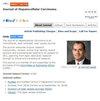Development of a Reliable GADSAH Model for Differentiating AFP-negative Hepatic Benign and Malignant Occupying Lesions
IF 4.2
3区 医学
Q2 ONCOLOGY
引用次数: 0
Abstract
Purpose: Developing a high-value, convenient, and validated differential diagnosis model to differentiate alpha-fetoprotein (AFP) negative hepatic occupying lesions and assist clinicians in early identification and intervention.Patients and Methods: A total of 340 patients with AFP-negative hepatic occupying lesions who were admitted to the Guangxi Medical University Cancer Hospital between August 2021 and April 2023 were included in the final retrospective analysis. The data were randomly divided into training and validation sets in a 7:3 ratio after performing multiple interpolations. In the training set, laboratory variables and models were screened using least absolute shrinkage and selection operator regression analysis, comparison of five machine learning algorithms, and univariate, as well as multivariate logistic regression analysis. A diagnostic prediction nomogram model was developed. We evaluated and validated the model using the receiver operating characteristic (ROC) curve analysis, calibration curve analysis, and decision curve analysis (DCA).
Results: We identified six significant predictive factors from the results of multivariate logistic analysis in the training set and incorporated them into the nomogram model for diagnosing AFP-negative hepatic malignant occupying lesions (HMOL). The diagnostic nomogram, including gender, age, des-gamma-carboxy prothrombin (DCP), serum ferritin (SF), AFP, and hepatitis B surface antigen (HBsAg), achieved an area under the curve of 0.905 discriminated patients with HMOL from those with benign occupying lesions. Additionally, calibration curves demonstrated the close alignment between the nomogram predictions and the ideal curve, along with the consistency between predictions and actual results. Moreover, the DCA curves illustrated indicated benefit for all patients. These finding were confirmed by the validation set.
Conclusion: The GADSAH model specifically targets the discrimination of malignant and benign liver lesions in AFP-negative patients. It offers a noninvasive, cost-effective, and efficient approach for diagnosing such cases.
Keywords: hepatic occupying lesions, alpha-fetoprotein-negative, nomogram, diagnostic model
开发可靠的 GADSAH 模型以区分 AFP 阴性肝脏良性和恶性占位病变
目的:建立一个高价值、便捷、有效的鉴别诊断模型,以鉴别甲胎蛋白(AFP)阴性肝占位性病变,协助临床医生早期识别和干预:本次回顾性分析共纳入广西医科大学附属肿瘤医院2021年8月至2023年4月期间收治的340例甲胎蛋白阴性肝占位病变患者。数据经多次插值后,按 7:3 的比例随机分为训练集和验证集。在训练集中,使用最小绝对收缩和选择算子回归分析、五种机器学习算法比较、单变量和多变量逻辑回归分析筛选实验室变量和模型。我们建立了一个诊断预测提名图模型。我们使用接收者操作特征曲线(ROC)分析、校准曲线分析和决策曲线分析(DCA)对模型进行了评估和验证:结果:我们从训练集的多变量逻辑分析结果中确定了六个重要的预测因素,并将它们纳入诊断 AFP 阴性肝恶性占位病变(HMOL)的提名图模型中。诊断提名图包括性别、年龄、去γ-羧基凝血酶原(DCP)、血清铁蛋白(SF)、AFP 和乙肝表面抗原(HBsAg),曲线下面积为 0.905,可将 HMOL 患者与良性占位性病变患者区分开来。此外,校准曲线显示了提名图预测结果与理想曲线之间的密切吻合,以及预测结果与实际结果之间的一致性。此外,DCA 曲线显示所有患者都能受益。这些发现在验证集上得到了证实:结论:GADSAH 模型专门用于鉴别 AFP 阴性患者肝脏的恶性和良性病变。关键词:肝占位性病变;甲胎蛋白阴性;提名图;诊断模型
本文章由计算机程序翻译,如有差异,请以英文原文为准。
求助全文
约1分钟内获得全文
求助全文

 求助内容:
求助内容: 应助结果提醒方式:
应助结果提醒方式:


